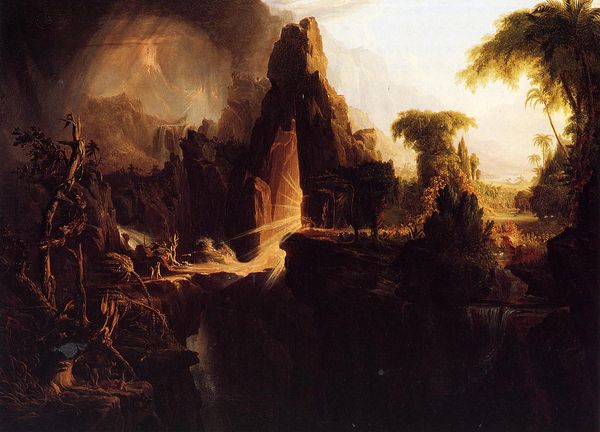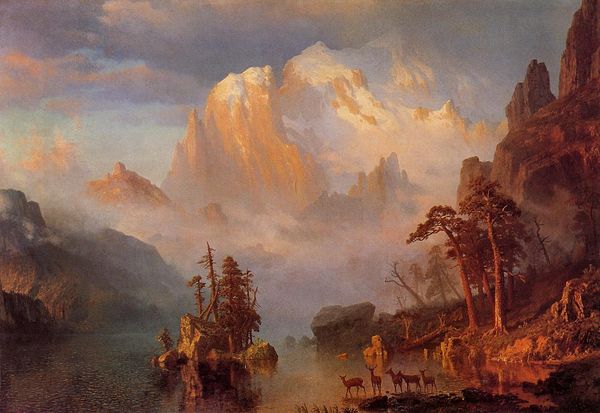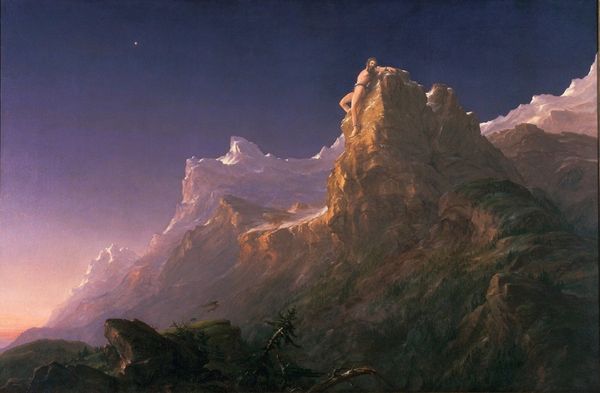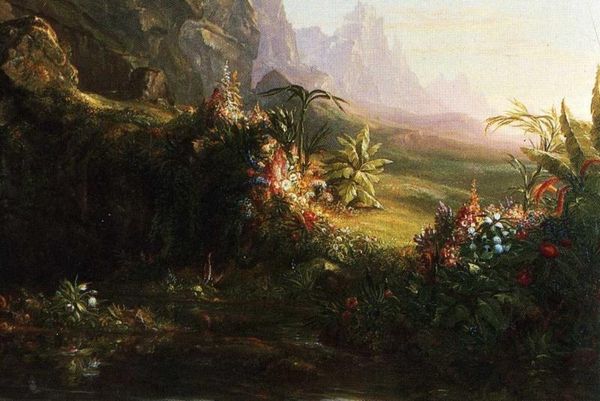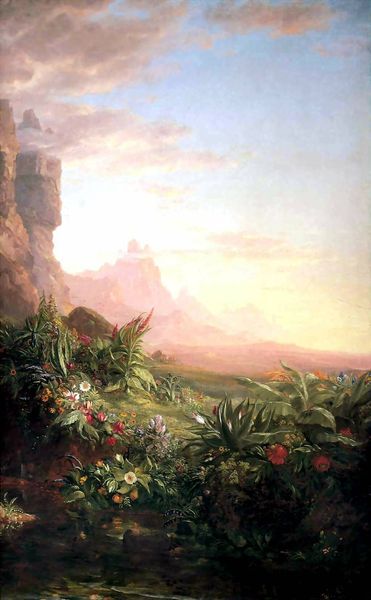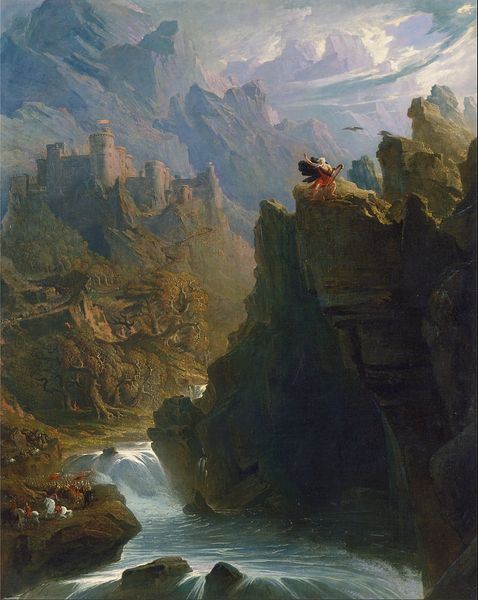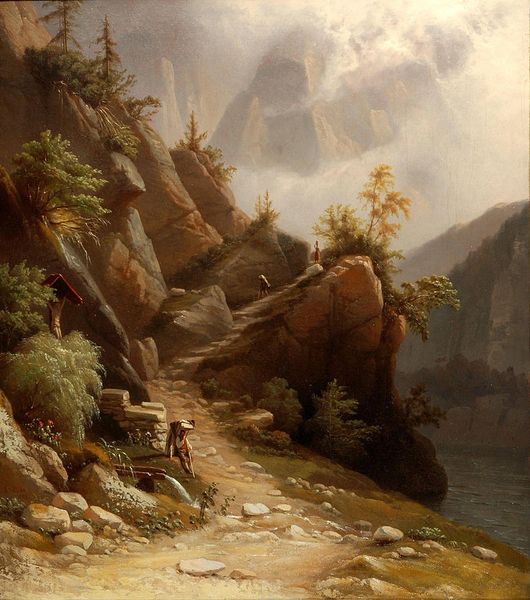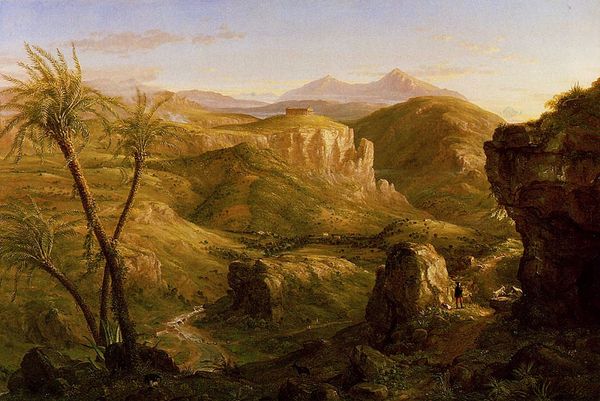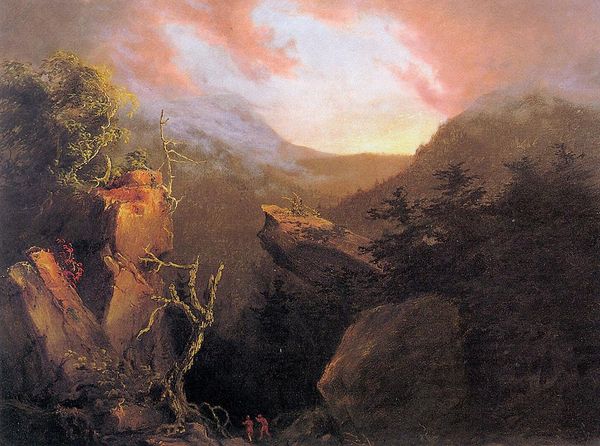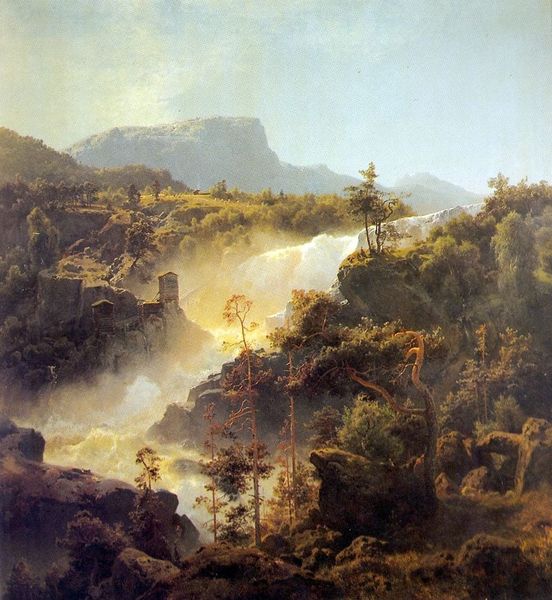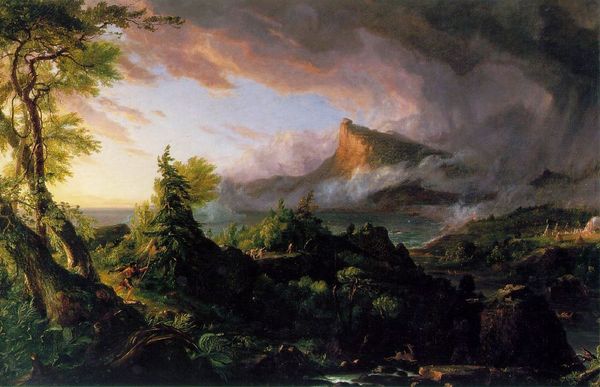
painting, oil-paint
#
sky
#
fantasy art
#
painting
#
oil-paint
#
landscape
#
figuration
#
oil painting
#
rock
#
romanticism
#
mountain
#
hudson-river-school
#
christianity
#
men
#
history-painting
#
nature
Copyright: Public domain
Curator: Before us hangs Thomas Cole's "Landscape Composition. St John in the Wilderness," painted in 1827, now residing at the Wadsworth Atheneum. Editor: The painting strikes me as intensely theatrical. The sheer scale of the landscape feels designed to overwhelm, like a backdrop in a morality play. Curator: That's an insightful reading. Cole, deeply entrenched in the Hudson River School movement, used the sublime and dramatic to convey spiritual and philosophical ideas tied to America's national identity, but also religious and historical narratives. Think about the construction of wilderness in early American discourse—was it empty and wild, or imbued with past presences? How are those histories obscured? Editor: Absolutely. And the way Cole has used oil-paint here – see how he’s built up the textures on the rock formations, really emphasizing the materiality of the landscape, the weight and density of the earth, not just as some kind of pictorial backdrop. Also the figure placement really is an addition of human presence. What about St. John here? Curator: Precisely, let’s examine how this connects to the representation of the divine within untamed nature. Consider that Cole integrates both St. John, with clear allusions to biblical narratives of asceticism and prophecy, but alongside what appears to be, and open for interpretation as, Indigenous peoples at left. This painting, beyond just displaying beautiful scenery, seems intent on conveying complex power structures through juxtapositions, setting a stage, you may even say. Editor: That’s where the raw materials come in: what is the production of landscape about? And how does it hide and erase itself? The brushstrokes create depth, but also a manufactured drama. You see labor rendered as sublime spectacle. The materials, oil on canvas, become a stage in themselves. Curator: Precisely, there is a dialogue to be found here that reflects on both land use but also historical narratives, religious projections and ideological framing of land. To truly grapple with "St John in the Wilderness", you have to see Cole playing out these dynamics, prompting an awareness to how the story of America writes over others. Editor: Cole's engagement with material depiction really prompts us to rethink these landscapes – both as they are experienced, painted, and used to bolster power. Curator: It leaves us considering not just the aesthetics, but the political undercurrents that charge the visual rhetoric in the 19th century and that we should reconsider even today. Editor: Indeed. It is also always revealing to rethink the production involved in its rendering as a crafted material product of labour.
Comments
No comments
Be the first to comment and join the conversation on the ultimate creative platform.

